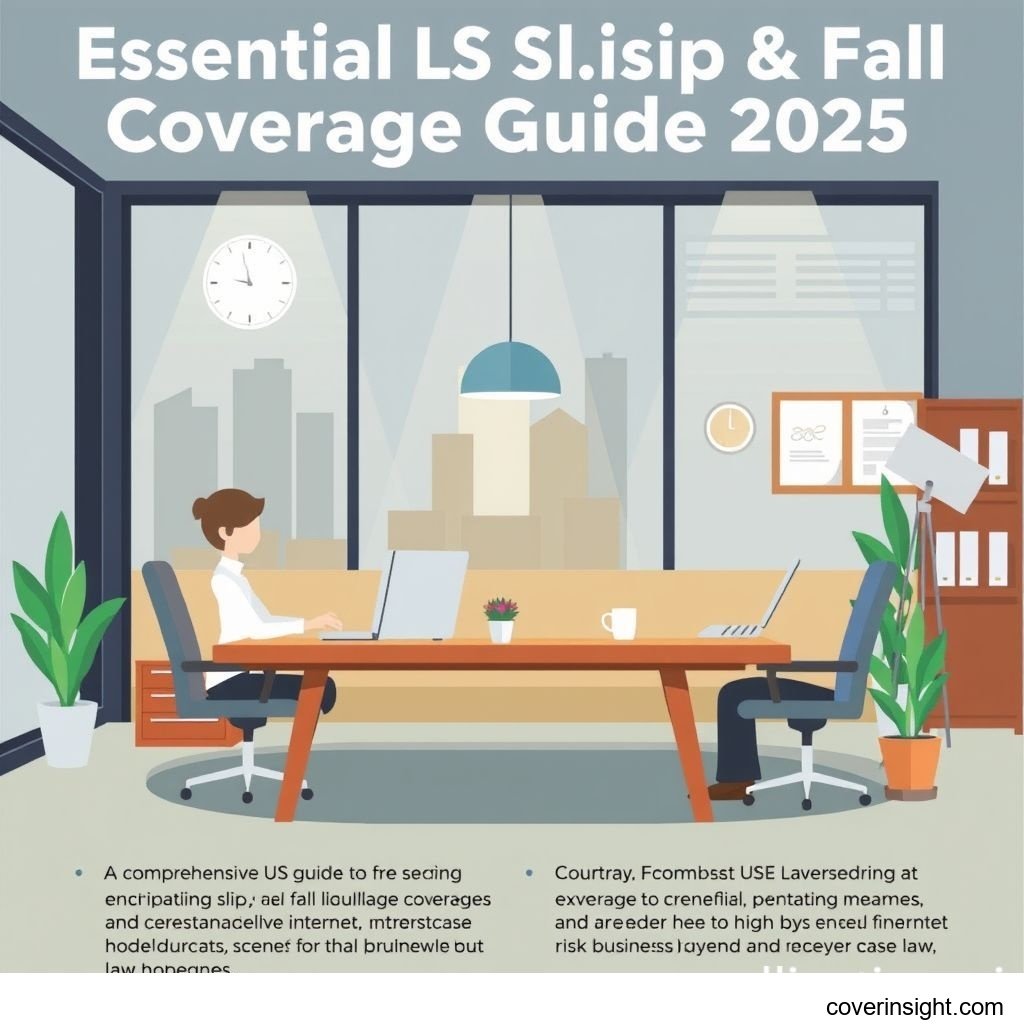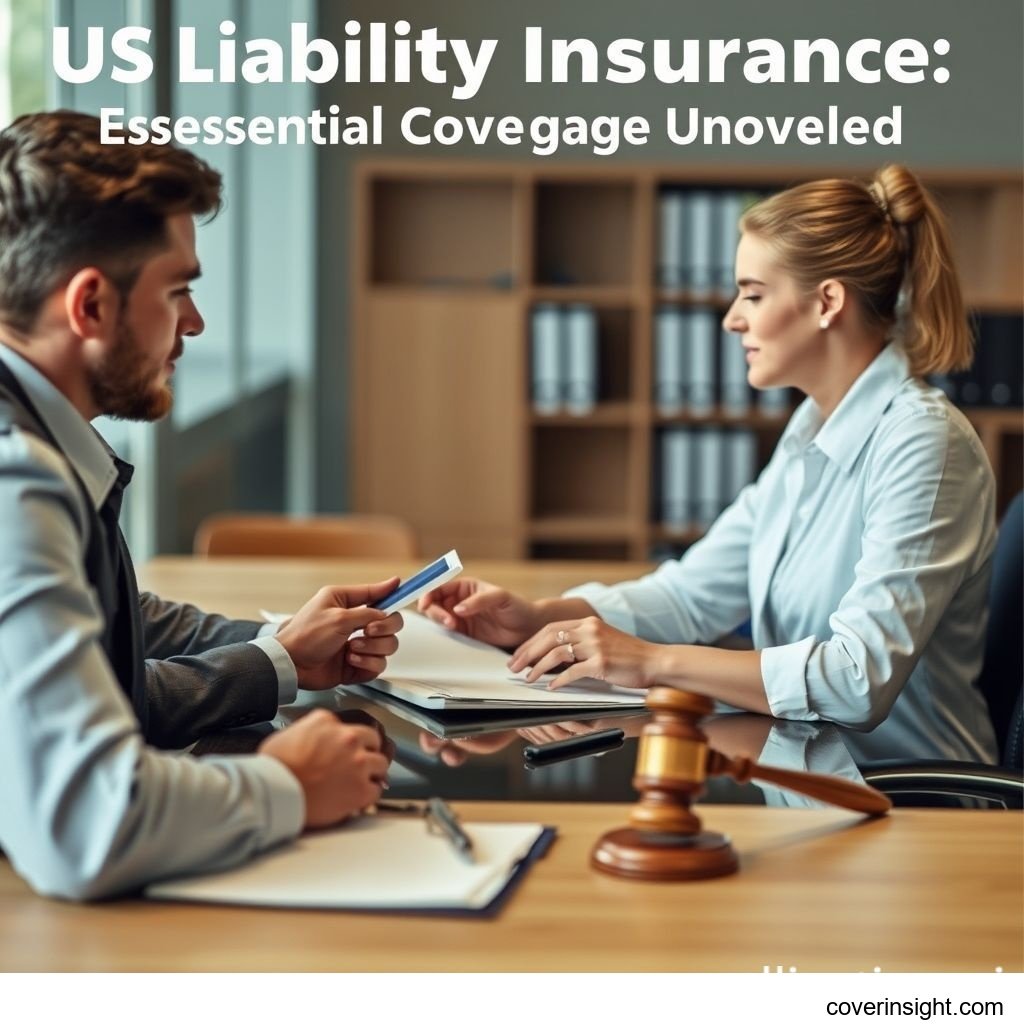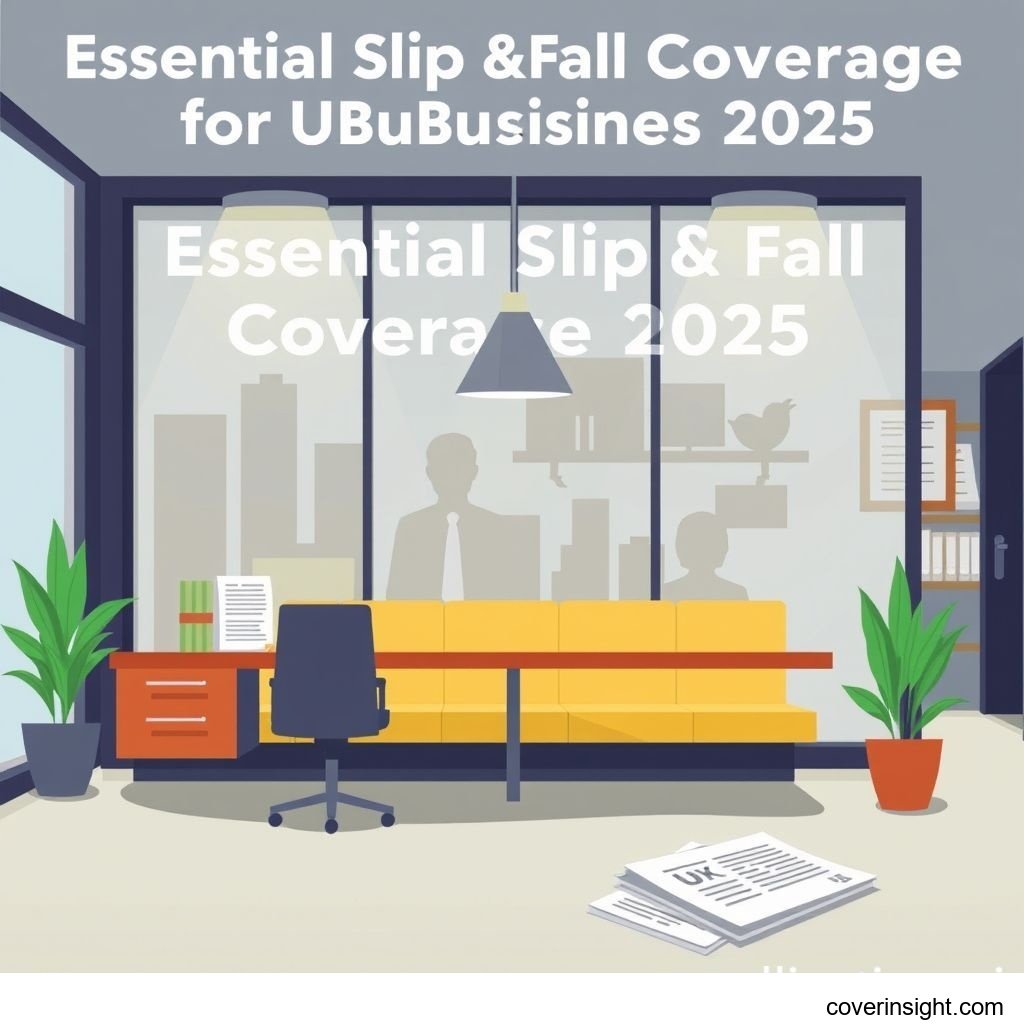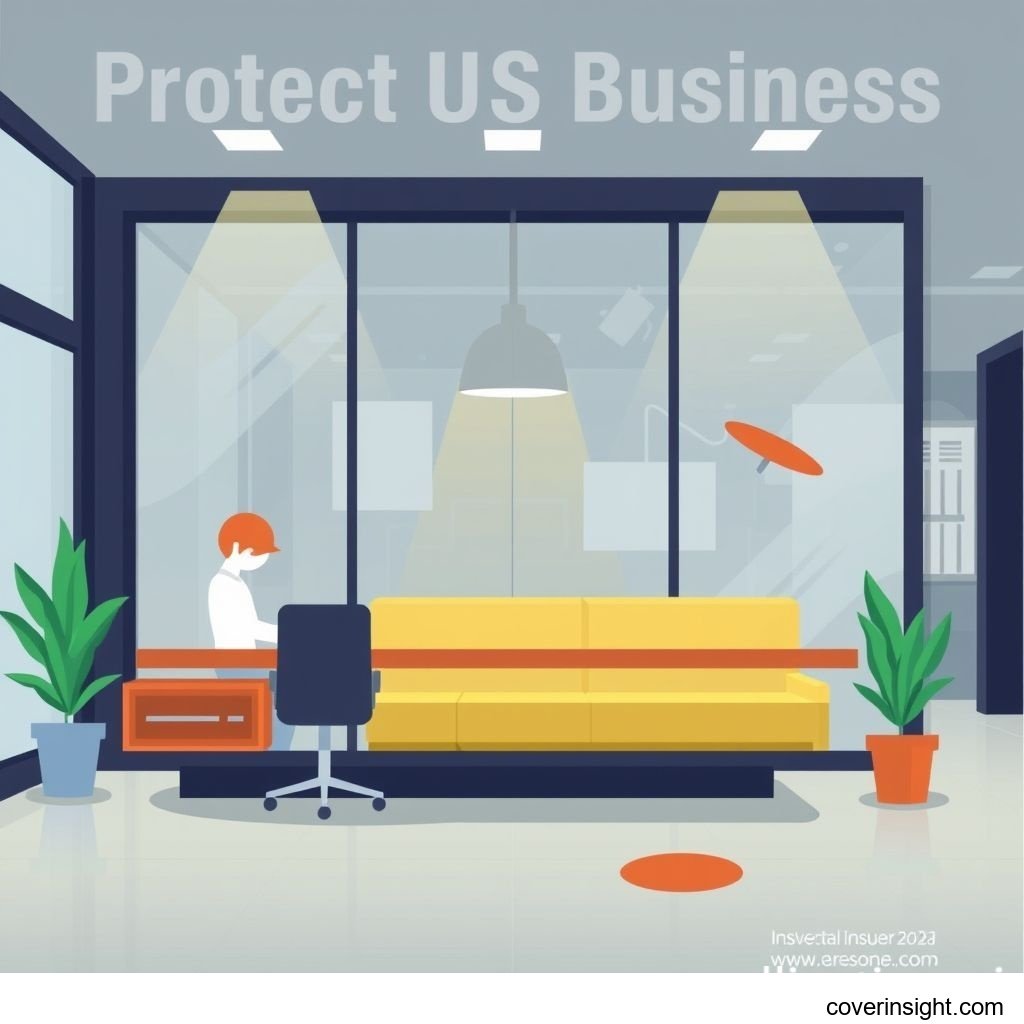Essential US Slip & Fall Coverage Guide 2025
Introduction
In the dynamic landscape of 2025, understanding slip and fall coverage in the US is more crucial than ever for businesses and property owners. These incidents, seemingly minor, can quickly escalate into costly legal battles, encompassing medical expenses, lost wages, and pain and suffering. Without adequate protection, a single misstep by a visitor could jeopardize your financial stability. This guide aims to demystify this essential aspect of general liability insurance, ensuring you're well-equipped to navigate potential risks.
Coverage Details
Navigating the specifics of slip and fall coverage requires a clear understanding of what’s typically included and, just as importantly, what isn’t.
What’s Included
Primarily, slip and fall coverage falls under the umbrella of general liability insurance. This type of policy is designed to protect your business or property from claims of bodily injury or property damage that occur on your premises or as a result of your operations. For slip and fall incidents, this typically includes:
-
Medical Payments: Coverage for the immediate medical expenses of the injured party, regardless of fault. This can help mitigate smaller claims before they turn into lawsuits.
-
Legal Defense Costs: Should an injured party decide to sue, the policy covers the costs of legal defense, including attorney fees, court costs, and investigation expenses. This is a significant benefit, as legal battles can be incredibly expensive, even if you are ultimately found not liable.
-
Settlements and Judgments: If you are found legally responsible for the injury, the insurance policy will pay for the settlement or judgment awarded to the injured party, up to your policy limits. This includes compensation for medical bills, lost wages, and pain and suffering.
-
Reputational Damage: While not directly covered monetarily, having proper insurance can help protect your business's reputation by demonstrating responsibility and ensuring prompt resolution of claims. Consider the case of a small art gallery in Santa Fe, New Mexico, where a visitor tripped over an improperly placed rug, breaking an ankle. Fortunately, their general liability policy promptly covered the visitor's extensive medical bills and a reasonable settlement, allowing the gallery to maintain its positive community standing rather than facing public outcry and legal battles.
Common Exclusions
While robust, slip and fall coverage isn't a silver bullet. There are typical exclusions you should be aware of:
-
Employee Injuries: Injuries sustained by your employees are generally covered under Workers' Compensation insurance, not general liability.
-
Intentional Acts: Damages or injuries caused by intentional acts of the insured are almost always excluded.
-
Professional Liability: Claims arising from professional negligence or mistakes (e.g., a doctor misdiagnosing a patient) are covered by professional liability insurance, not general liability.
-
Auto Accidents: Injuries related to vehicle accidents on your property are typically covered by commercial auto insurance.
-
Punitive Damages: While policies cover compensatory damages, some may exclude or limit coverage for punitive damages, which are awarded to punish the defendant.
-
Major Catastrophes: Damage or injuries resulting from catastrophic events like earthquakes or floods might require specific additional policies.
Cost Analysis
The cost of slip and fall coverage is an investment in peace of mind and financial security. It's often bundled within a general liability policy, and its price can vary considerably.
Price Factors
Several factors play a pivotal role in determining your premiums:
-
Type of Business/Property: High-traffic businesses like retail stores, restaurants, or event venues typically face higher premiums due to increased public exposure and inherent risks. A quiet office space will generally pay less than a bustling amusement park.
-
Business Size and Revenue: Larger businesses with higher revenues usually have more assets to protect and potentially more visitors, leading to higher premiums.
-
Location: Geographic location can influence rates due to varying local laws, average litigation costs, and even population density. For instance, premiums in a litigious metropolitan area might be higher than in a rural setting.
-
Claims History: A history of previous slip and fall claims will almost certainly lead to higher premiums. Insurers view past claims as an indicator of future risk.
-
Safety Measures: Businesses that demonstrate proactive safety measures, such as clear signage, regular maintenance, non-slip flooring, and adequate lighting, may qualify for lower rates.
-
Policy Limits and Deductibles: Choosing higher coverage limits will increase your premium, while opting for a higher deductible (the amount you pay out-of-pocket before insurance kicks in) can lower it.
-
Industry Risk: Certain industries inherently pose a higher risk for falls. According to the National Safety Council, falls are a leading cause of unintentional injury, and while specific data for commercial liability claims varies, average general liability claims resulting from these incidents can range from $20,000 to over $100,000, depending on the severity of injuries and jurisdiction. This wide range underscores the financial exposure businesses face.
Saving Tips
Smart strategies can help you secure comprehensive coverage without breaking the bank:
-
Implement Robust Safety Protocols: Proactive risk management is your best friend. Regular inspections, immediate cleanup of spills, proper lighting, handrails, and clear warning signs can significantly reduce incidents and demonstrate to insurers that you're a lower risk.
-
Bundle Policies: Many insurers offer discounts when you purchase multiple policies, such as general liability, property insurance, and commercial auto, from the same provider.
-
Shop Around: Don't settle for the first quote you receive. Obtain quotes from several different insurance providers to compare rates and coverage options. Reputable resources like the National Association of Insurance Commissioners can provide consumer guides and state-specific information. You might also find valuable insights at Insurance Resources Global or when exploring US Insurance Home.
-
Review Your Coverage Annually: Business needs evolve, and so should your insurance. Annually review your policy limits and coverage to ensure they still align with your risks and budget.
-
Increase Your Deductible (Strategically): If you have a healthy emergency fund, a higher deductible can lower your monthly premiums. Just ensure you can comfortably afford the deductible should a claim arise.
-
Maintain a Good Claims History: By minimizing incidents and promptly addressing potential hazards, you reduce your chances of future claims, which helps keep your premiums stable.
FAQs
-
How much does slip and fall coverage cost?
The cost varies widely based on factors like business type, location, size, and claims history. Small businesses might pay anywhere from a few hundred to a couple of thousand dollars annually for general liability, which includes slip and fall protection.
-
What affects premiums?
Premiums are influenced by your business's inherent risk, its size and revenue, the specific industry, your claims history, the location, and the limits and deductibles you choose for your policy.
-
Is it mandatory?
While federal law doesn't explicitly mandate slip and fall coverage (general liability), many states or industries might have requirements. More importantly, landlords often require tenants to carry it, and it's almost universally considered a non-negotiable for responsible business operation due to the high costs associated with potential lawsuits. Checking with your specific State Insurance Departments is always a good idea.
-
How to choose?
Assess your business's unique risks, compare quotes from multiple reputable insurers, and carefully review policy limits, deductibles, and exclusions. Consider consulting an experienced insurance broker who can guide you through the options. Remember that while some medical expenses for the injured party might be covered by your liability insurance, their personal health costs would typically fall under their own health insurance, possibly via resources like Healthcare.gov or private plans.
-
Consequences of no coverage?
Operating without slip and fall coverage is akin to playing Russian roulette with your business. A single serious incident could lead to massive out-of-pocket legal fees, substantial medical bills for the injured party, and large settlements or judgments that could easily bankrupt your business or even lead to personal financial ruin if you're a sole proprietor or partnership.
Author Insight & Experience:
Based on my experience observing the small business landscape in the US, I’ve seen firsthand how quickly a seemingly minor incident can turn into a colossal headache for a business owner. It’s not just about covering the financial cost; it's about protecting your dream, your livelihood, and your peace of mind. Many business owners tend to focus on immediate profitability, overlooking the "what-ifs." But as someone living in the US, where litigation is a common response to injury, I can confidently say that robust slip and fall coverage isn't just a safety net—it’s an absolutely essential foundation for any operation that interacts with the public. Skimping on this vital protection is simply not worth the gamble.









Comments